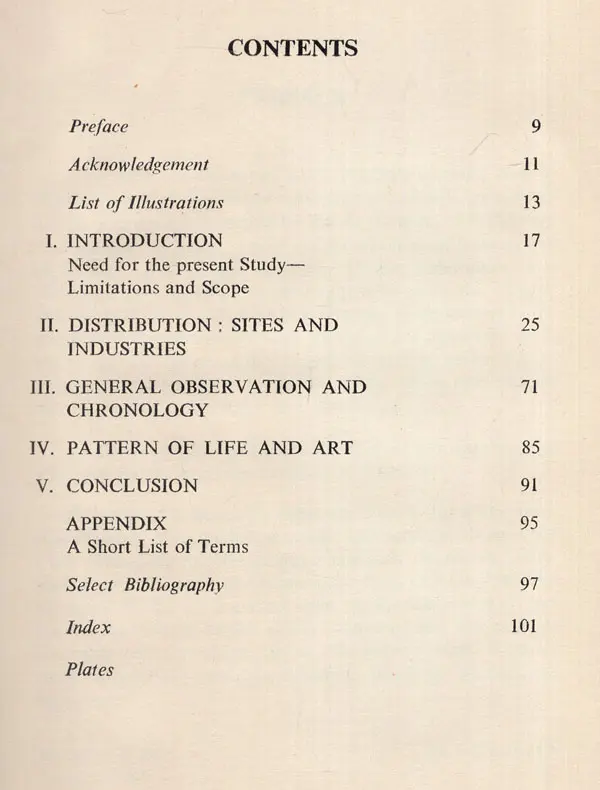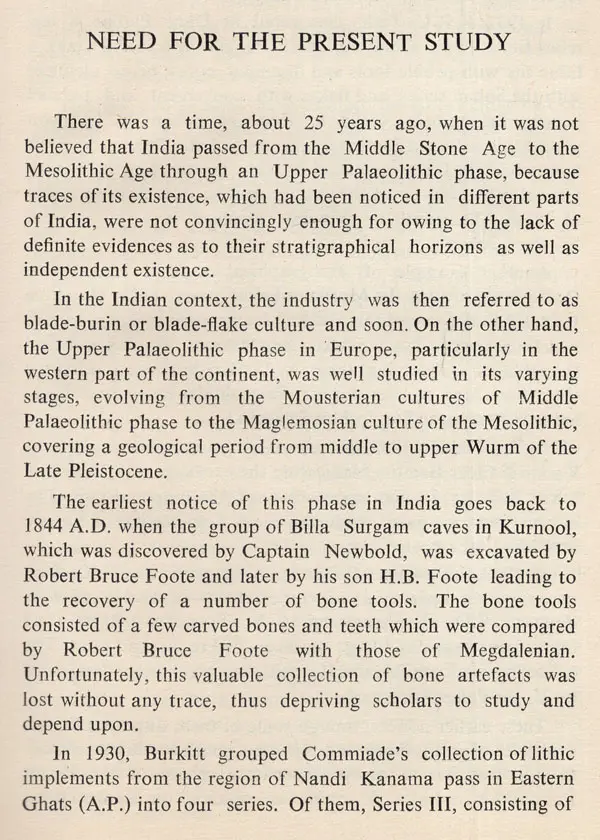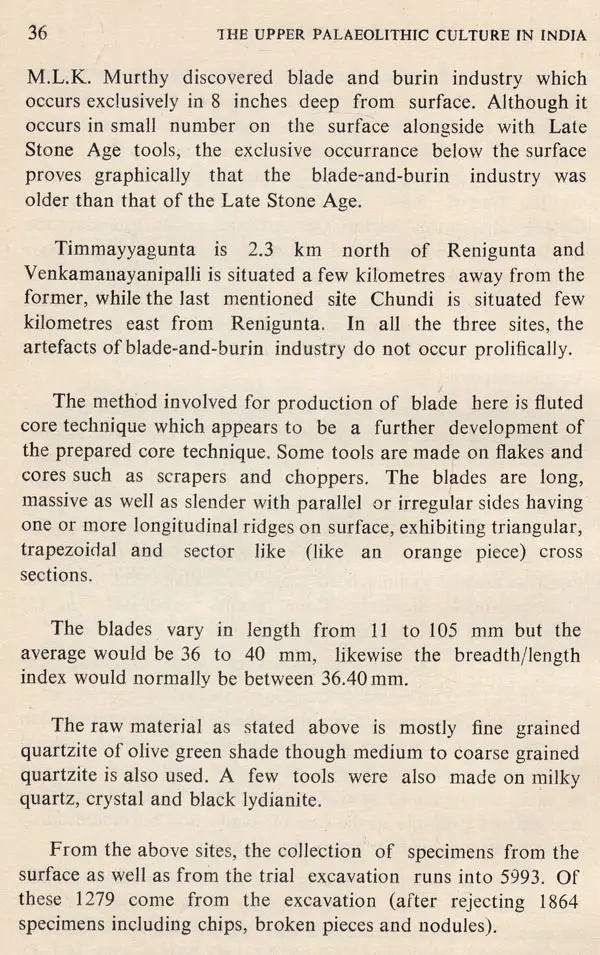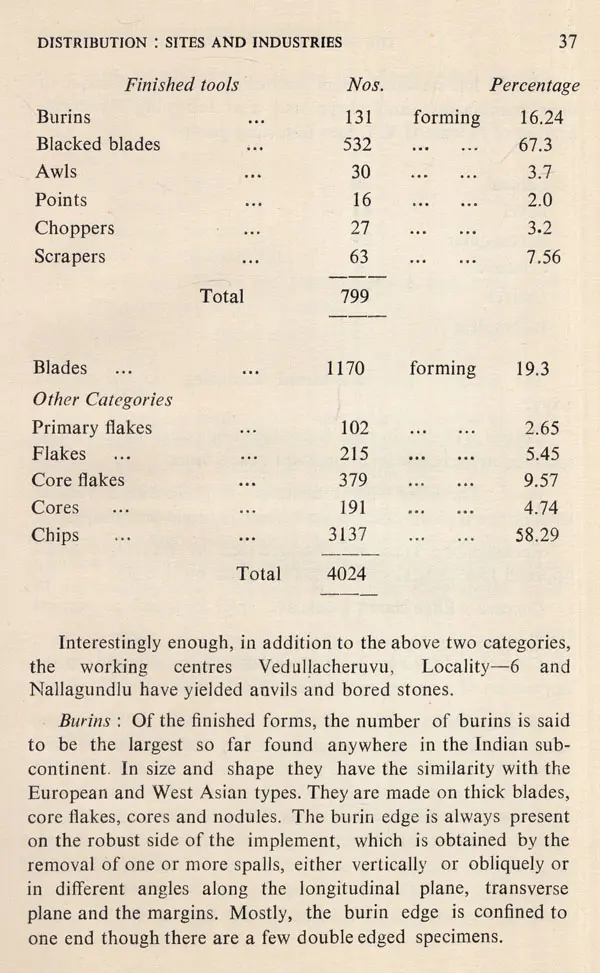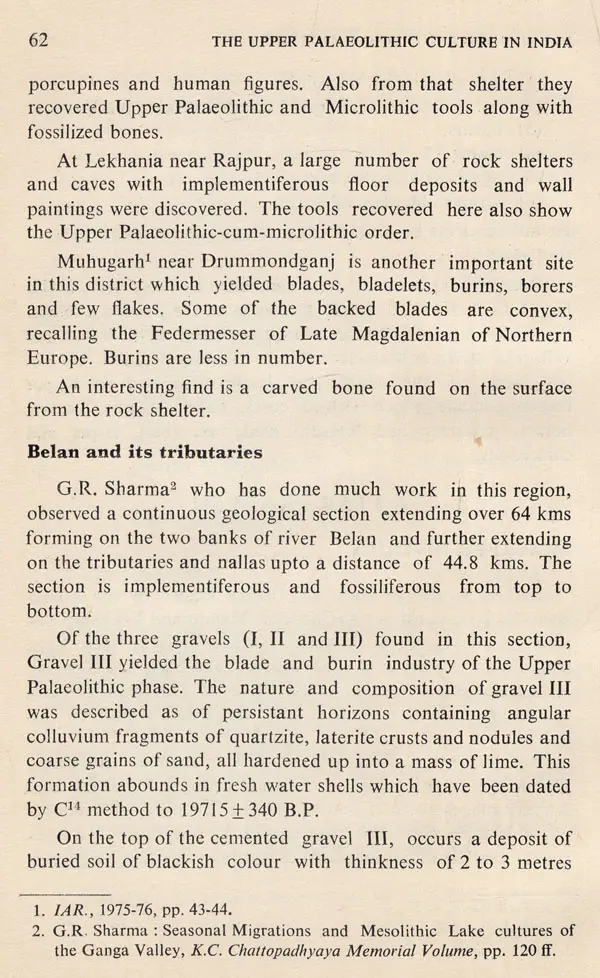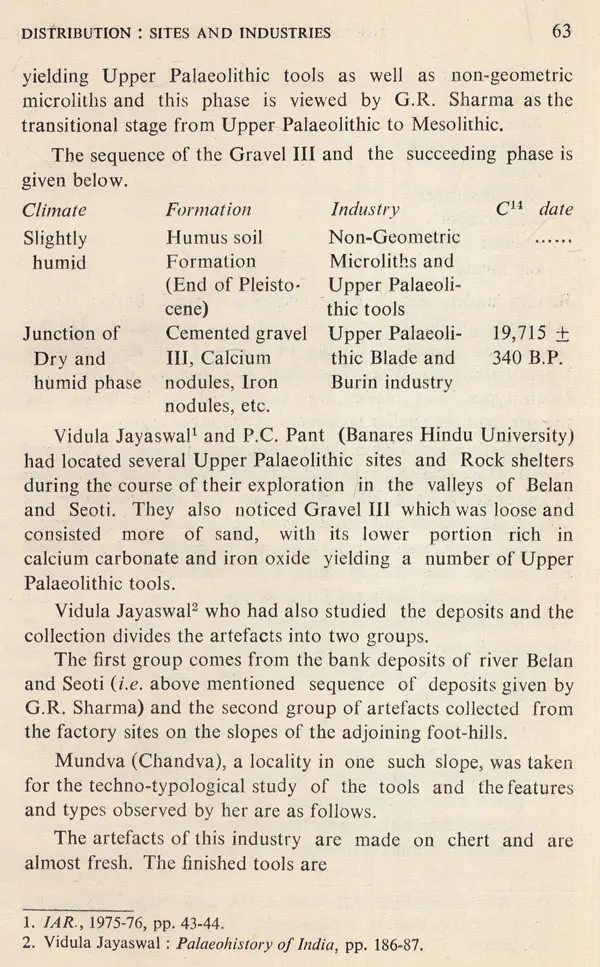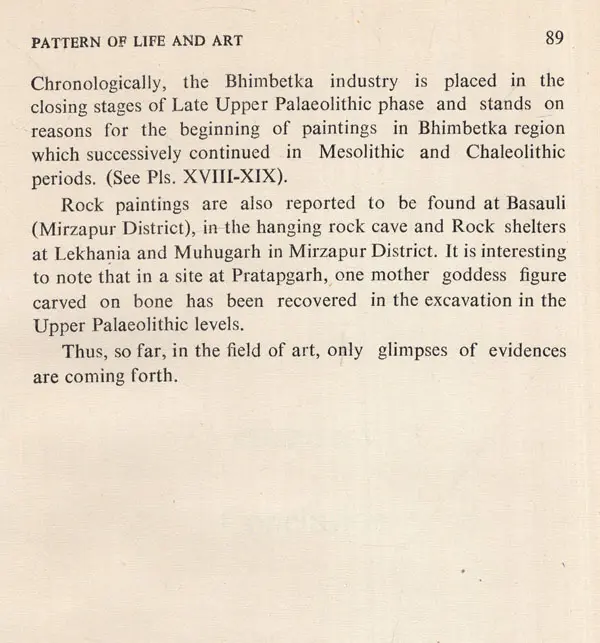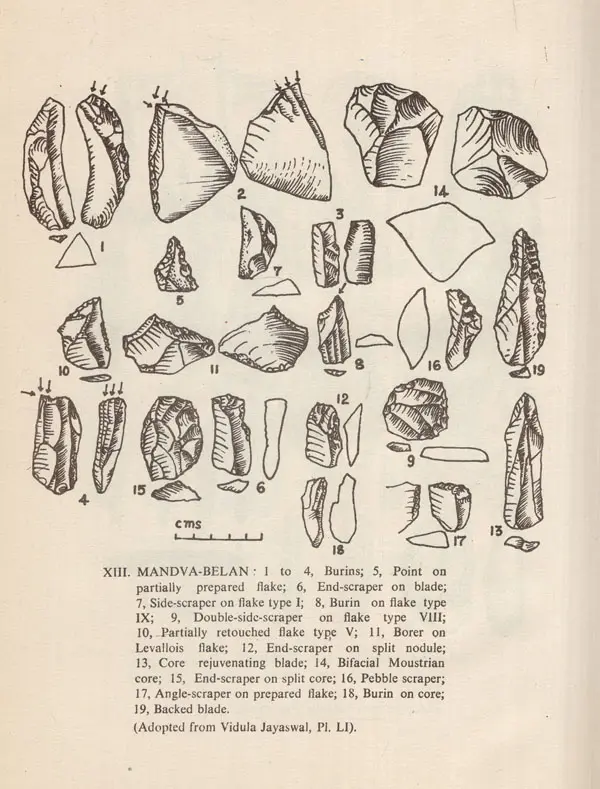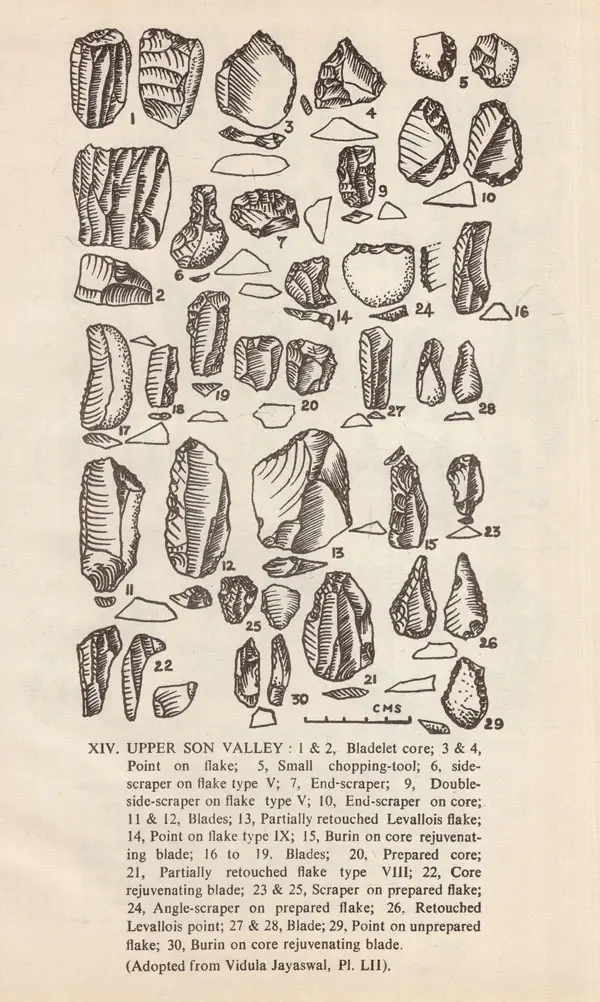
The Upper Palaeolithic Culture in India (An Old and Rare Book)
Book Specification
| Item Code: | UAS675 |
| Author: | M.J. SHARMA |
| Publisher: | Agam Kala Prakashan, Delhi |
| Language: | English |
| Edition: | 1982 |
| Pages: | 126 (Throughout B/w Illustrations) |
| Cover: | HARDCOVER |
| Other Details | 8.50 X 5.50 inch |
| Weight | 270 gm |
Book Description
Till a couple of decades back it was almost the concensus of Indian Prehistorians that there never was an Upper Palaeolithic phase in the Stone Age of India. This view held the ground in spite of the discoveries of bone and stone tools by Foote in his excavations, at Billasurgam caves, Kurnool District, Burkitt's classification of Cammiade's collections, Todd's find at Khandivili near Bombay, as also at Dhok Pathan (Pakistan), Zeuner's explorations and assessment, etc.; all of them have compared their tool repertoire to some lithic industries of European or African Upper Palaeolithic. Since the sixties there has been a spurt in the prehistoric research of India and the intensive as well as extensive explorations and excavations followed by careful analytical study of correlated stratigraphical and typological evidences as at Renigunta and Kurnool regions of the South, Maharashtra, Gujarat and Rajasthan, Belan valley in U.P. (which incidentally provides a firm chronological background) compel us to revise the stand hitherto taken by earlier savants, since Maharashtra has provided a complete picture in the evolution of this Upper Palaeolithic wedged in between the Middle Palaeolithic and the Microlithic phases. It is gratifying to note that this has been partially substantiated in the Belan valley. The present book by Sharma in five chapters-Introduction, Distribution of sites and industries, General observa tions and chronology, Patterns of life, art and religion and conclusion-incorporates all the evidences of the field work carried out in the entire country, in all its aspect fully and exhaustively. A systematic analysis and shifting of the data has led the author to establish in unequivocal terms the presence of the Upper Palaeolithic in India. Certainly the book, throwing an illuminating ray in the dark alley of Indian prehistory is a welcome addition.
M.J. Sharma (b. 1942) did M.A. (Indology), under the eminent Prehistorian, Late Prof. M. Seshadri, Dept. of Ancient History and Archaeology, University of Mysore, Mysore. Sharma obtained the coveted merit position in the Diploma course of the School of Archaeology of the Survey in 1980.
Sharma is presently in the Epigraphy Branch of the Archaeological Survey, Mysore since 1964. Besides being a co-author of the Corpus of South Kanara Inscriptions he has contributed many research papers on epigraphy, numismatics, protohistory, etc. Sharma had been Assistant Secretary of the Epigraphical Society of India and for some time Treasurer of the Place Name Society of India.
In the wake of discoveries from extensive surveys, excavations and studies by various investigators as well as govern mental or quasi-governmental bodies in the field of Prehistoric Archaeology in India, a void in the sequence of cultures and chronology of Prehistory between Middle Palaeolithic and Mesolithic periods, has been seemingly filled up by the "Upper Palaeolithic" phase. It is time to enumerate, in the interest of the progress of Prehistory, almost all such sites and industries coming within the range of the Upper Palaeolithic phase and to make further intrinsic study of the phase in the light of their natural variations, evolution and chronology.
A humble attempt has been made here in this direction and it is open for comments and reviews by scholars.
The subject has been of a debatable nature for a long time. And the idea of an analytical study had occurred to me while I was undergoing the post-graduate Diploma course in Archacology at the School of Archaeology, New Delhi in 1980. But to pursue the work in a short time, in the intended way, was not possible owing to the widely dispersed and not so easily accessible source materials. Hence, the present work is mainly based on published materials, including, as far as possible, the latest ones.
Book's Contents and Sample Pages

